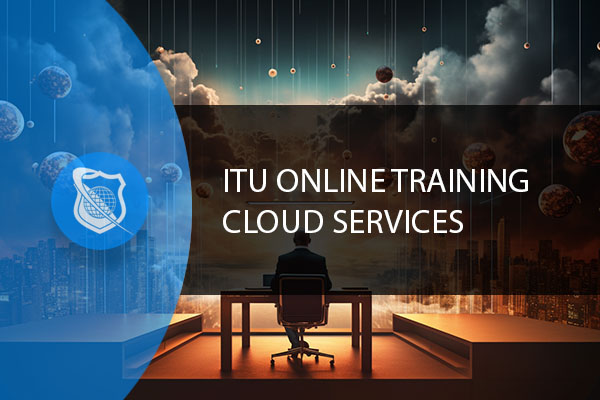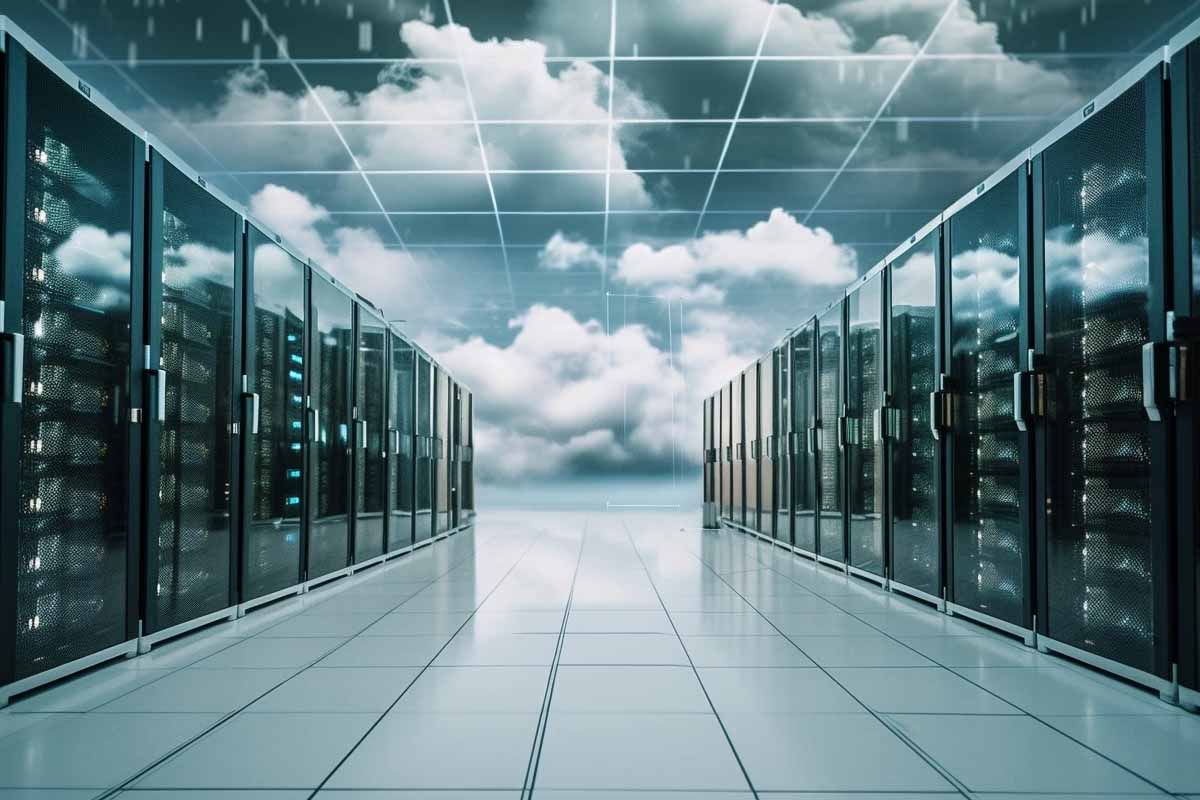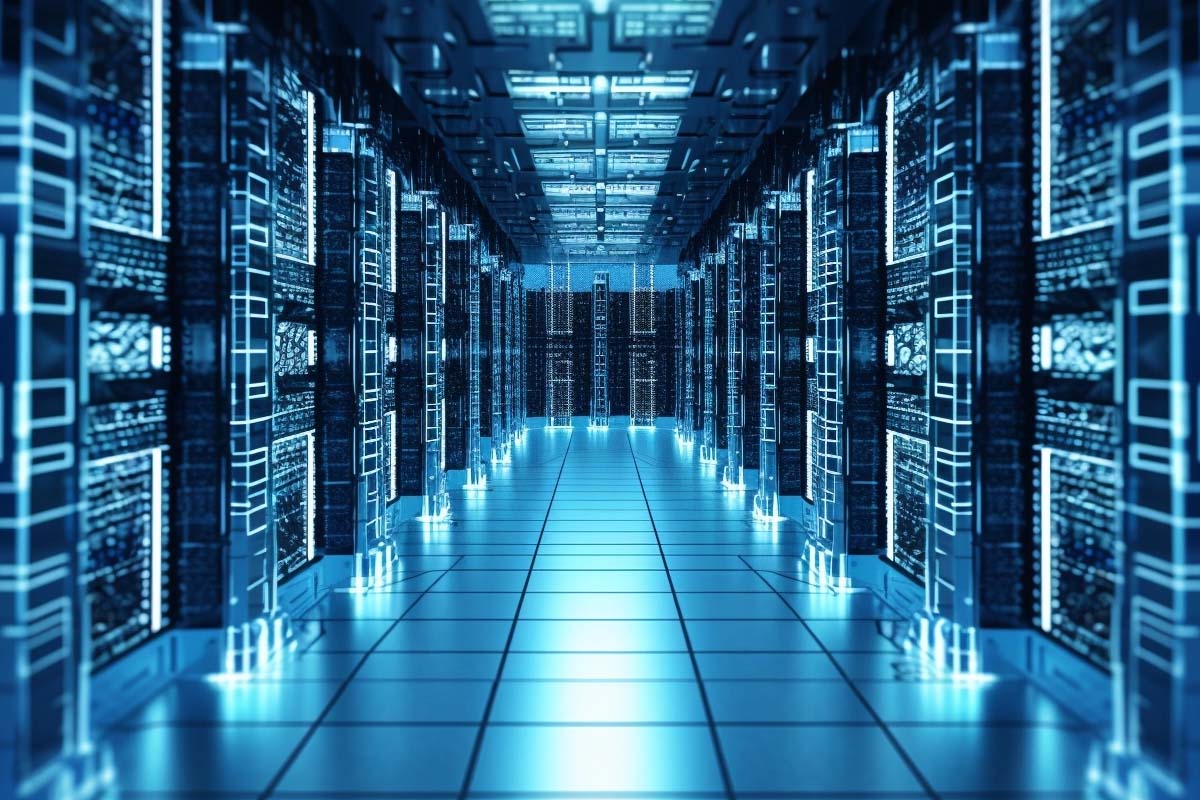Introduction
The definition of cloud has seen dramatic shifts in interpretation and application over the past ten years. Once an elusive term mainly found in technology-focused conversations, it has now entered the mainstream lexicon and is discussed as readily in executive meetings as it is at dinner tables. What started as a term used to simplify the concept of server space has now evolved into a multifaceted technological realm that influences virtually every aspect of modern life. What is the definition of cloud computing, you may ask? It’s not just about storage or server space anymore. This comprehensive guide aims to peel back the layers of cloud technology to give you a clear understanding of what cloud means, its historical evolution, and its diverse functionalities. Throughout this article, you’ll gain an in-depth understanding of the term, making it easier to engage with the ever-changing landscape of the cloud.
The Origins of the Cloud Concept: A Historical Overview
What is a Cloud: The Early Days
The genesis of the “cloud” concept in technology goes back to the mid-20th century, with roots deeply embedded in the realm of computer science and network engineering. Specifically, the 1960s brought the initial idea into the spotlight, although the cloud’s meaning at that time was far removed from what it signifies today. Back then, cloud computing was often associated with the concept of time-sharing and the utilization of shared resources and virtual machines.
It’s fascinating to note that the term “cloud” itself was borrowed from telephony. Telecom companies began to use the term to describe points in the telephone network where the specifics of the infrastructure were not relevant to the diagram’s purpose. Similarly, in its infancy, the description of a cloud was often used to denote networks on flowcharts, representing the complex structure of the internet as a simplified cloud-like shape.
Moreover, the late 1960s and early 1970s saw the introduction of the ARPANET, the precursor to the internet. It served as an experimental ground where the idea of remote access to computing power began to take form. The aim was to make optimal use of expensive mainframe resources by allowing multiple users to share processing power, storage, and other resources—a novel idea that became the cornerstone for what we now understand as cloud computing.
During this era, the definition of a cloud was primarily centered around shared resources, and it did not yet include the host of services and functionalities it offers today. While the early use of the term may have been more constrained, the foundational work from this period served as the basis for the complex cloud ecosystems we interact with today.
Thus, if we were to look at clouds’ definition from a historical perspective, we’d find a continual evolution that goes hand in hand with advancements in internet technology and computing power. This historical context sets the stage for the vast array of cloud functionalities and use-cases that are a part of our digital lives today.

Get Ahead In Cloud Computing
At ITU, we offer an exclusive Cloud Computing training series designed to prepare you for certification and/or to help you gain knowlege of all Cloud based platforms including AWS, Azure and Gooogle Cloud.
Get access to this exclusive Cloud Computing Training today.
The Meaning of Cloud Through the Ages
The conceptual evolution of the cloud is intriguing and reflects broader shifts in technology and society. In the early days, the cloud was primarily a metaphor for the Internet, symbolizing the “unknown” or “network of networks” that made up the World Wide Web. Over time, as technology advanced, the definition of cloud underwent a transformation. What started as a mere representation for network diagrams began to offer concrete services that had tangible impacts on businesses and individuals.
In the mid-2000s, companies like Amazon and Google laid the groundwork for the modern understanding of cloud computing. Now, it was no longer just about storage or shared resources; it was also about providing on-demand computing services like processing power and complex applications over the Internet. The meaning of cloud, therefore, started to encapsulate not just storage, but a host of functionalities like data analytics, machine learning, and artificial intelligence, all accessible over the internet.
This transformation helped redefine the description of a cloud into a technology suite that can virtually replace an entire on-premise data center. It offers a broad spectrum of capabilities that include but are not limited to storage, networking, databases, analytics, software, and intelligence. Understanding this ongoing evolution provides us a richer appreciation of its impact, from simplifying complex processes to offering cost-effective and scalable solutions.
Understanding Cloud Types: An Essential Guide
Meaning of a Cloud: Public, Private, Hybrid
To comprehend the nuances in cloud definitions, it’s essential to grasp the different deployment models that govern how the cloud is used. Cloud deployment models can be broadly classified into three categories—Public, Private, and Hybrid clouds—each with distinct characteristics and use-cases.
Public clouds are perhaps what most people envision when they think of the cloud. Managed by third-party providers, these clouds are accessible over the Internet and offer the convenience of easy accessibility. Because resources in a public cloud are shared among multiple users, or “tenants,” it provides a cost-effective way for individuals and organizations to use computing resources without owning physical infrastructure. What is the definition of cloud for many users? It’s often synonymous with the public cloud, where they can store files, host websites, or run applications on a pay-as-you-go basis.
On the other end of the spectrum are Private clouds. These are often considered the answer to the question, “what is a cloud” for large corporations and enterprises with stringent data security and compliance requirements. Unlike public clouds, resources here are not shared; they are exclusively used by a single organization, providing a more secure and controlled environment.
Hybrid clouds bridge the gap between public and private clouds. They allow data and applications to be shared between them, offering businesses greater flexibility and optimization of existing infrastructure and security. When people ask, “what is the definition of a cloud,” the answer could very well be a hybrid cloud, depending on their specific needs for flexibility, cost-efficiency, and security.
By understanding these variations in cloud deployment models, we can appreciate the term’s breadth and depth. Each model offers different benefits and functionalities, contributing to the layered and multifaceted definition of what cloud computing is today.
What is the Definition of Cloud Based on Services?
Understanding cloud computing involves more than just knowing it’s a system of servers that store data and applications over the Internet. It also involves distinguishing among the types of cloud services available, which can be categorized primarily into Software as a Service (SaaS), Platform as a Service (PaaS), and Infrastructure as a Service (IaaS).
Software as a Service (SaaS) is perhaps the most widely recognized form of cloud computing for the average consumer. Whether it’s Google Docs or Salesforce, these are applications provided over the Internet, eliminating the need to install software on individual computers. When people ponder, “what is the definition of a cloud for everyday applications?” they’re often thinking of SaaS solutions.
Platform as a Service (PaaS) goes a step further by providing not just software but also a platform allowing users to develop, run, and manage their own applications without dealing with the complexities of building and maintaining infrastructure. Think of platforms like Heroku or Microsoft Azure; these are instances where cloud meaning broadens to include developmental frameworks.
Infrastructure as a Service (IaaS) offers even more control, allowing businesses to rent virtual machines, servers, storage, and networking on a pay-as-you-go basis. This category includes services like Amazon Web Services (AWS) and offers the most flexibility but also demands more technical expertise [1].
Each of these services brings its own set of features, benefits, and functionalities to the table, enriching our understanding of what a cloud can be, far beyond a mere storage solution.

Get Ahead In Cloud Computing
At ITU, we offer an exclusive Cloud Computing training series designed to prepare you for certification and/or to help you gain knowlege of all Cloud based platforms including AWS, Azure and Gooogle Cloud.
Get access to this exclusive Cloud Computing Training today.
Functionalities and Use-Cases: Beyond Storage
Cloud Define: Storage Capabilities
When the conversation turns to the cloud, the concept that often springs to mind is storage. Services like Dropbox and Google Drive have made the cloud synonymous with a place to store digital files. While storage remains a core feature, it’s important to remember that the definition of a cloud encompasses so much more. Beyond being a digital “locker,” it’s a dynamic ecosystem that offers functionalities ranging from real-time data analytics to the execution of complex machine learning algorithms.
Description of a Cloud: Communication and Collaboration
Storage may be a significant part of what clouds are known for, but their capabilities extend much further into the realm of communication and collaboration. If you look at the description of a cloud from the perspective of business operations, you’d find a wealth of tools designed to facilitate better communication, project management, and collaborative efforts.
Services like Slack and Microsoft Teams are excellent examples of cloud-based solutions that have revolutionized the way businesses communicate. These services have made it possible for teams across the globe to work together in real-time, sharing files, conducting meetings, and managing projects efficiently. Furthermore, specialized tools for video conferencing, like Zoom or WebEx, also operate in the cloud, offering seamless communication solutions.
Similarly, project management tools like Asana and Trello are cloud-based platforms that have greatly simplified task allocation, progress tracking, and team collaboration. These tools offer functionalities that go beyond what traditional software could provide, given their ability to sync data in real-time across multiple devices and users.
In summary, the description of a cloud would be incomplete if we only looked at it as a storage solution. It’s a complex, multifaceted technology that impacts various aspects of modern life, from the way we store and analyze data to how we communicate and collaborate both in our personal and professional lives.
The Modern Implications: Cloud in Today’s World
Clouds Def: Data Security and Compliance
As we look at how the definition of cloud has evolved, one cannot overlook the increasingly crucial role of data security and compliance. With cyber threats like ransomware and data breaches becoming more frequent and sophisticated, the cloud is often expected to be a fortress of data protection. Organizations today demand stringent security protocols and compliance measures from cloud service providers. This includes features like end-to-end encryption, multi-factor authentication, and compliance with regulations such as the General Data Protection Regulation (GDPR) or the Health Insurance Portability and Accountability Act (HIPAA).
So when people ask, “What is the definition of cloud today?”, a significant part of the answer lies in its ability to securely store, manage, and transmit data in a compliant manner. Businesses and individuals alike are looking for cloud solutions that not only offer scalability and flexibility but also provide robust security measures.
Cloud Definition: Sustainability and Environmental Impact
Another evolving aspect that’s becoming integral to the cloud définition is sustainability. As data centers consume significant amounts of energy, cloud service providers are increasingly taking steps to mitigate their environmental impact. Companies like Google and Amazon are investing in renewable energy sources to power their data centers, and are also focusing on designing more energy-efficient systems.
The meaning of cloud is now starting to include its environmental footprint. Whether it’s through carbon-neutral commitments or innovations in cooling systems to reduce energy consumption, cloud providers are increasingly considering their environmental responsibility. This is an acknowledgment that the definition of cloud needs to be both technologically advanced and environmentally sustainable.
Inclusion of energy-efficient data centers and eco-friendly policies in the cloud définition reflects a broader social concern for sustainability. It shows that cloud computing isn’t just about offering robust and scalable technological solutions but is also about doing so responsibly.
By understanding these modern implications, we gain a more comprehensive view of what the definition of cloud involves today. Far from being just a technological concept, it’s an evolving ecosystem that continually adapts to meet the needs and challenges of today’s digital world, ranging from security to sustainability.

Get Ahead In Cloud Computing
At ITU, we offer an exclusive Cloud Computing training series designed to prepare you for certification and/or to help you gain knowlege of all Cloud based platforms including AWS, Azure and Gooogle Cloud.
Get access to this exclusive Cloud Computing Training today.
What Are Cloud Technologies Going to Be Like in the Future?
The future of cloud technologies is incredibly promising and laden with opportunities for further evolution. While we have a reasonable understanding of what is the definition of a cloud today, emerging technologies like quantum computing, edge computing, and Artificial Intelligence (AI) are poised to push the boundaries even further.
For example, quantum computing could revolutionize the way we understand cloud functionalities, providing unprecedented processing power that could lead to breakthroughs in fields ranging from medicine to cryptography. Additionally, the ever-increasing focus on sustainability promises more energy-efficient designs and perhaps even cloud services that leave a negative carbon footprint.
Moreover, as data privacy and cyber threats remain pertinent issues, the future of cloud computing is likely to focus even more on security and compliance, reinforcing its role as a secure and dependable data management solution.
By exploring what the cloud is today and envisioning its future, we hope you now possess a deep and rounded understanding of cloud meaning and cloud definition. It’s clear that the cloud is far more than a buzzword or a fleeting trend; it is a cornerstone technology shaping our collective digital future. So the next time you’re prompted with the question, “what is a cloud,” you’ll be well-prepared to offer a rich, insightful answer that takes into account the technology’s multifaceted nature and its transformative potential.
Conclusion: The Evolving Definition for Cloud
So, what is the definition of a cloud? As we’ve explored throughout this comprehensive primer, defining the cloud is a complex task. It is a term that has evolved over the years to include a myriad of functionalities—far beyond its initial conception as merely a storage solution or a metaphor for the Internet. In today’s digital landscape, the definition for cloud spans multiple dimensions, including data storage, computing power, security measures, and even factors like environmental sustainability.
Whether you are a business leader keen on leveraging the power of cloud computing or a tech-savvy individual navigating the digital realm, gaining a nuanced understanding of the cloud’s meaning is essential. As we move forward, the meaning of cloud will continue to expand, shaped by technological advancements, societal needs, and global challenges.
Frequently Asked Questions About the Definition of Cloud
What is the definition of cloud computing?
The definition of cloud computing refers to the delivery of computing services like storage, processing power, and applications over the Internet. These services allow users to access and use resources without needing to maintain physical hardware or software.
How has the definition of cloud evolved over the years?
The definition of cloud has significantly evolved from its early days when it was primarily focused on shared resources and virtualization. Today, it encompasses a wide array of functionalities, including data storage, advanced computing, data analytics, and even environmental sustainability measures.
What are the different types of clouds based on the definition of cloud?
According to the modern definition of cloud, there are three primary types: public, private, and hybrid clouds. Public clouds are shared resources accessible over the Internet, private clouds are exclusive to a single organization, and hybrid clouds are a blend of both public and private clouds.
What services are included in the definition of cloud computing?
The definition of cloud computing generally covers three main types of services: Software as a Service (SaaS), Platform as a Service (PaaS), and Infrastructure as a Service (IaaS). Each has its own set of features and functionalities, from application development platforms to virtualized hardware.
Is security part of the definition of cloud?
Yes, in today’s landscape, security is an integral part of the definition of cloud computing. Cloud providers often offer robust security measures like end-to-end encryption, multi-factor authentication, and compliance with various international and local data protection regulations.
























